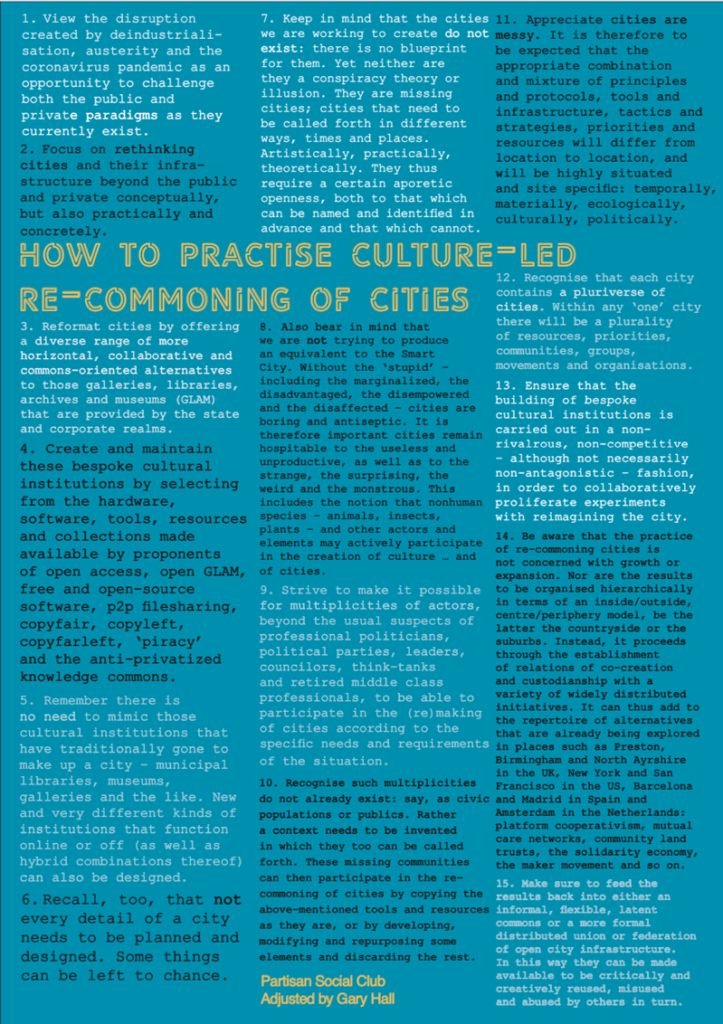How to Practise The Culture-led Re-commoning of Cities
How to Practise The Culture-led Re-commoning of Cities is a poster work by PSC (adjusted by Gary Hall). Originally made for the Coventry Creates project (a collaboration with artist Duncan Whitley entitled Art & the Urban Commons)
Previous works, (The economic function of public art is to increase the value of private property, 2004 and The function of public art for regeneration is to sex-up the control of the under-classes, 2005, Freee art collective) have enquired into ways art is utilized as a functionary of neo-liberalism through its relationship to depoliticizing modes of governance. Returning to the same problematics we changed the term regeneration to re-commoning in order to rethink ideas of the city.
We, (Gary Hall and Mel Jordan) presented the poster as part of a paper for the conference, City, Public, Space, Body. Our presentation entitled The city does not exist was part of session 11: ‘The Making of Cityness’
In this work we are trying to discuss problems we think exist with the current planning of cities, which is usually based upon innovatie strategies within technocratic contexts of local planning. The motivations for the poster text are listed below
- We can no longer rely on previous incarnations of the city as the blueprint for the new ecologically stable, socially equitable metropolis
- We cannot imagine we know who lives in the city – and we cannot pre-empt who or what they will be.
- As the new city dwellers do not exist we have to be prepared to call them forth.
- In order to provoke the becoming of new subjectivities and the formation of opinion we cannot rely on tired techniques of ‘inclusion’. We have to invent and implement new strategies for participation.
- We must transform the city into a new and evolving process that accepts multiple assemblies and shifting compositions of life.
- We must negate the city as it stands – there is no space for reform because the infrastructure is flawed. The city may never again exist in the same way.
- The multiverse is an innovative re-packaged way to engage us with new tech platforms. This version of ‘multiverse’ must be hijacked in favour of a city that doesn’t exist, and a version of the multiverse that is based on multiple ways to think about how we can live together.

